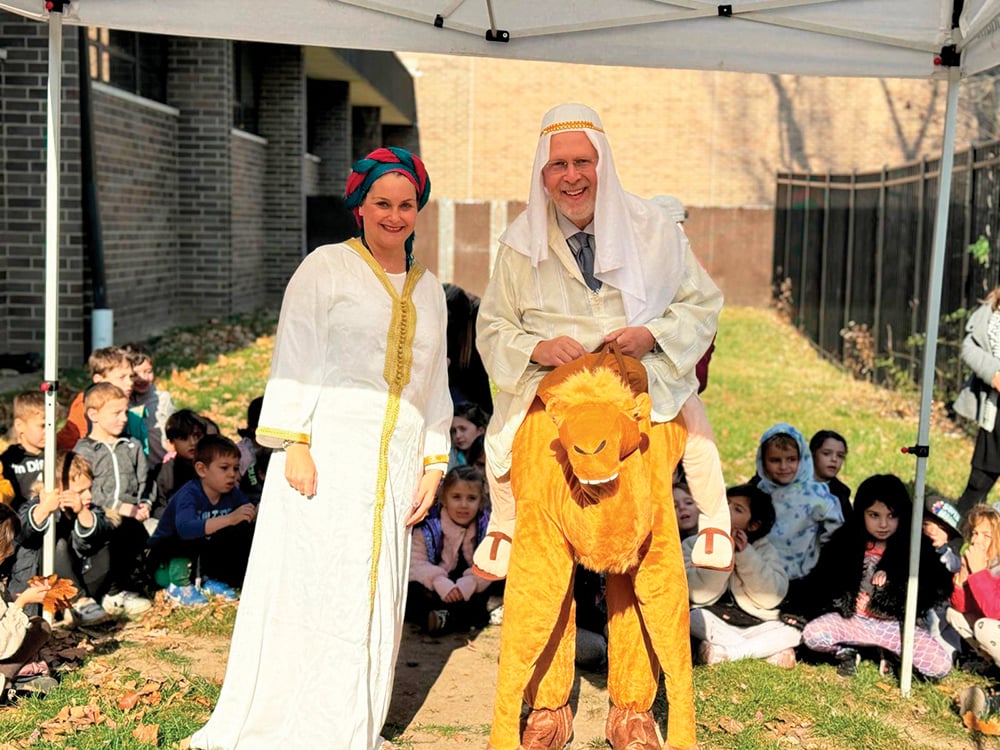
“The Saint, The Queen, and the Joker,” a recent three-part series offered by the Rutgers University Bildner Center for the Study of Jewish Life, shared how folklore or aggada (narrative material, as parables, maxims or anecdotes) can help us understand Sephardic culture. Led by Ron Lasri, Aresty Visiting Scholar, and presented via Zoom, each session focused on a specific figure in Sephardic folklore.
The first session introduced Rabbi Isaac ben Solomon Luria Ashkenazi, commonly known as “Ha’Ari,” who lived in the Israeli city of Tzfat in the 16th century and is considered the father of contemporary Kabbalah. After the multiple expulsions of Jews from Spain and surrounding countries, the definition of Sephardim included those who could trace their lineage to Spain and maintained the common language of Ladino. Ha’Ari was born to a Sephardic mother and Ashkenazic father, but raised by a maternal uncle after his father’s death.
Classifying Ha’Ari as a Jewish saint derives from his description as a tzaddik. The miraculous story of his birth, attributed ability to time travel while he slept and his development of Kabbalistic practice classify Ha’Ari as a cultural hero.
Queen Esther, the topic of the second session, is understandably a popular figure in Sephardic culture. Following waves of forced conversions beginning in the late 14th century, conversos tried to appear outwardly Christian, while maintaining their Jewish identity internally. Conversos revered Esther, as she was also a “hidden Jew” navigating in the king’s palace and maintaining her faith. The role of women in preserving Jewish identity is well known, as they pass the oral tradition, Sabbath observance, kosher laws and education to the family.
Conversos would joyfully celebrate the Fast of Esther for three days as a way of purging their systems of non-kosher food they may have been forced to eat to prove their acceptance of Christianity. They see in Esther their own dream coming true, when people converted to Judaism following the miracles that happened in the Purim story, and Esther is able to reveal her identity. The Conversos had a particularly difficult path—those who remained Jewish didn’t like them and the Christians didn’t like them, but everybody liked Esther.
During the Inquisition, the daughter of Francisco Rodrigues Matos was caught in Mexico and charged with being a converso and disloyal to the Church. The Latin translation of the Bible includes a prayer said by Esther, which was repeated by Matos’ daughter. The Torah does not contain Esther’s prayer, yet it would not be surprising that such a holy woman would have prayed.
The third session covered the Joker—Joha, the fool and trickster. The traditional folk story is that of a person with the outward appearance of a fool, yet who often presents a biting satire that outwits his foes with a seemingly silly presentation. The folk stories printed in text sometimes lose the essence of the stories that were initially presented in a live and vibrant atmosphere.
There are also some changes to stories over time and across cultures. Lasri noted that there are more than 1,000 versions of the Cinderella story, and the same is true for Joha, who appears in the folklore of many Middle Eastern and Mediterranean cultures.
The story of the “fool” can be examined further. Is the fool a joker? Unintelligent? A mirror of humanity and society? Or is the “fool” actually the only wise person in the room? We see Joha connected to Sephardic culture and reflecting the different social and economic backgrounds of various communities. Sometimes playing the fool has its advantages when it diffuses anger and defers or eradicates punishment. While the legacy of the joker is universal, it is also Jewish in nature. Some see the Ashkenazi equivalent of Joha in the tales of Chelm.
Lasri presented several stories of Joha from the silliest to the moralistic. In some tales, Joha gets in trouble for being very literal in his interpretation of tasks he is asked to do, in others he is more philosophical.
Nancy Sinkoff, director of the Bildner Center, noted that the power of the literary narrative is incredibly strong. “More people are moved by stories than dry historical facts,” she said. The three-session program showed the strength of those words, as the many people attending learned an incredible amount of history, along with Sephardic folklore. The Saint, the Queen and the Fool echo different perspectives of Jewish Sephardic folklore and represent different times and lives that we can continue to learn from.
Recordings of past sessions (and humorous Joha stories) can be found online, on the Bildner website. To learn more about future and prior programming at the Bildner Center, visit https://bildnercenter.rutgers.edu/
By Deborah Melman













